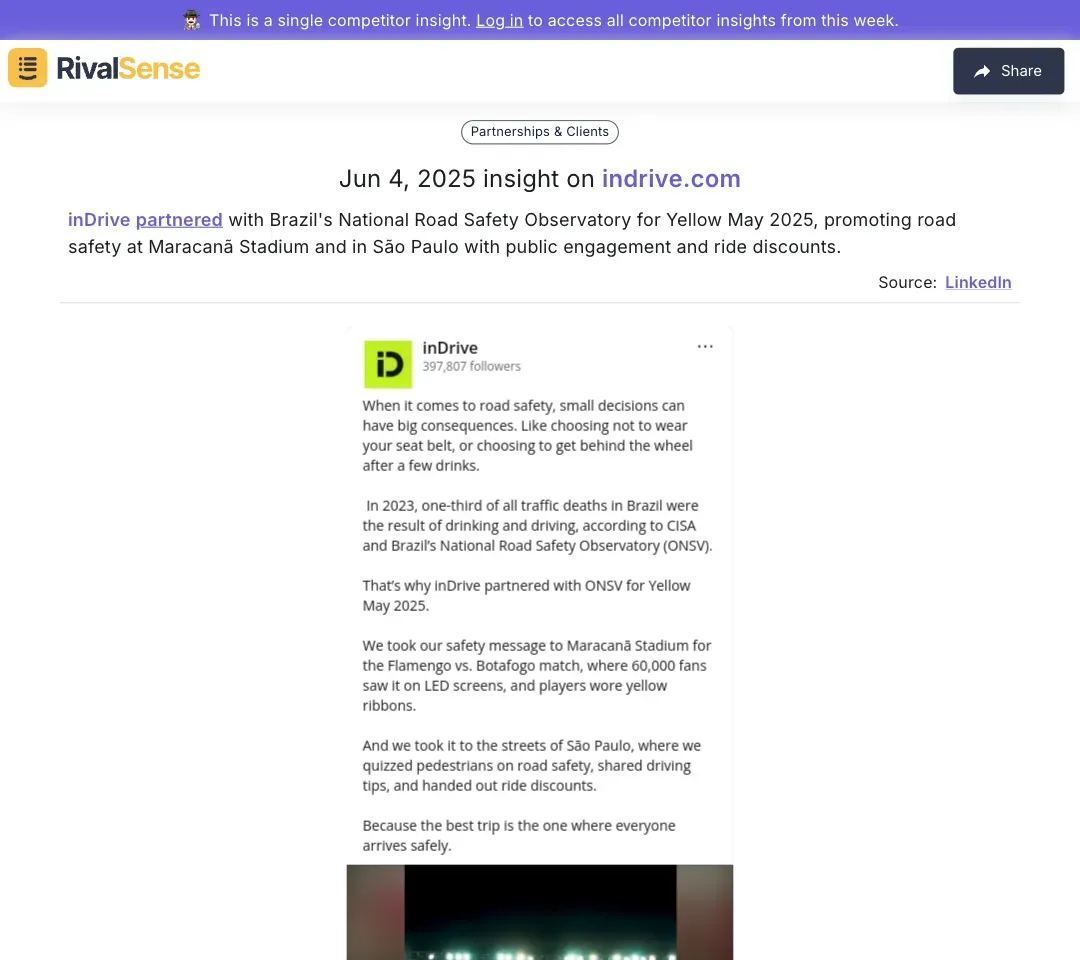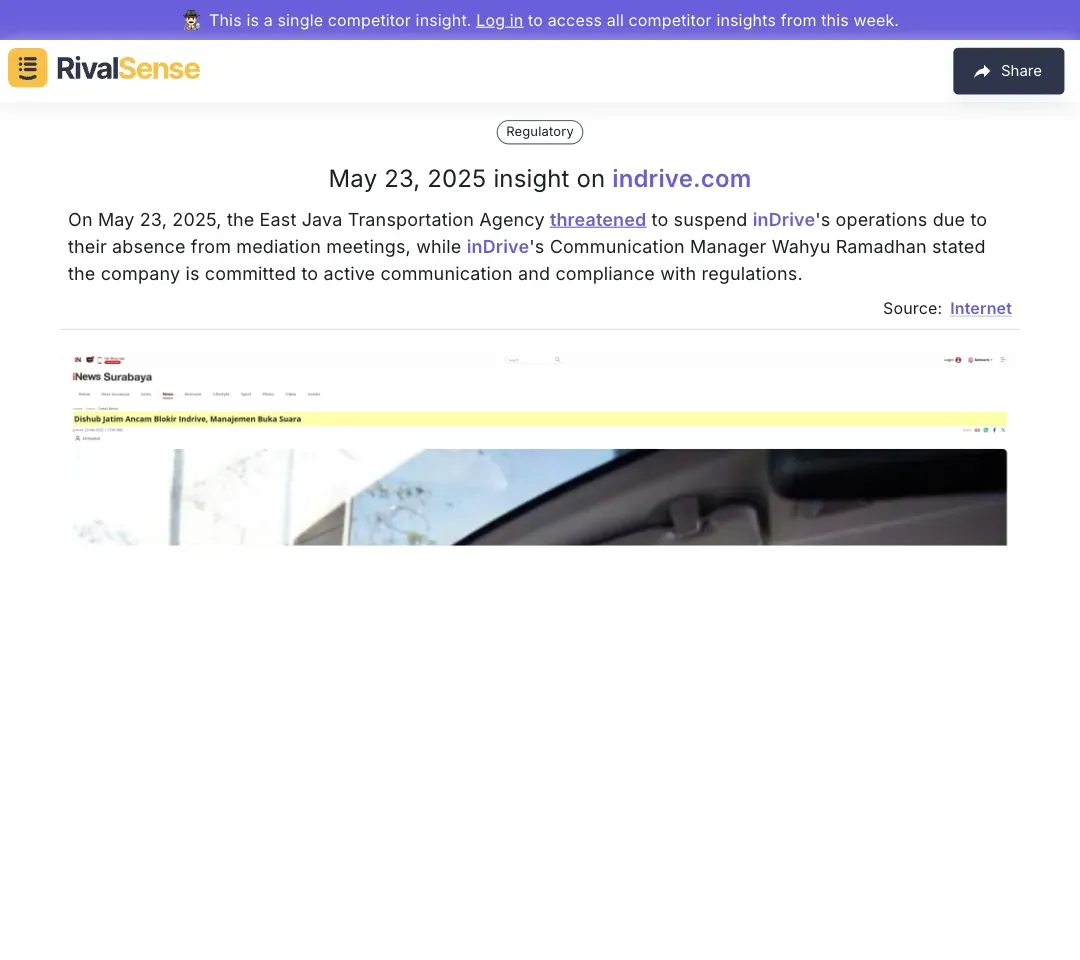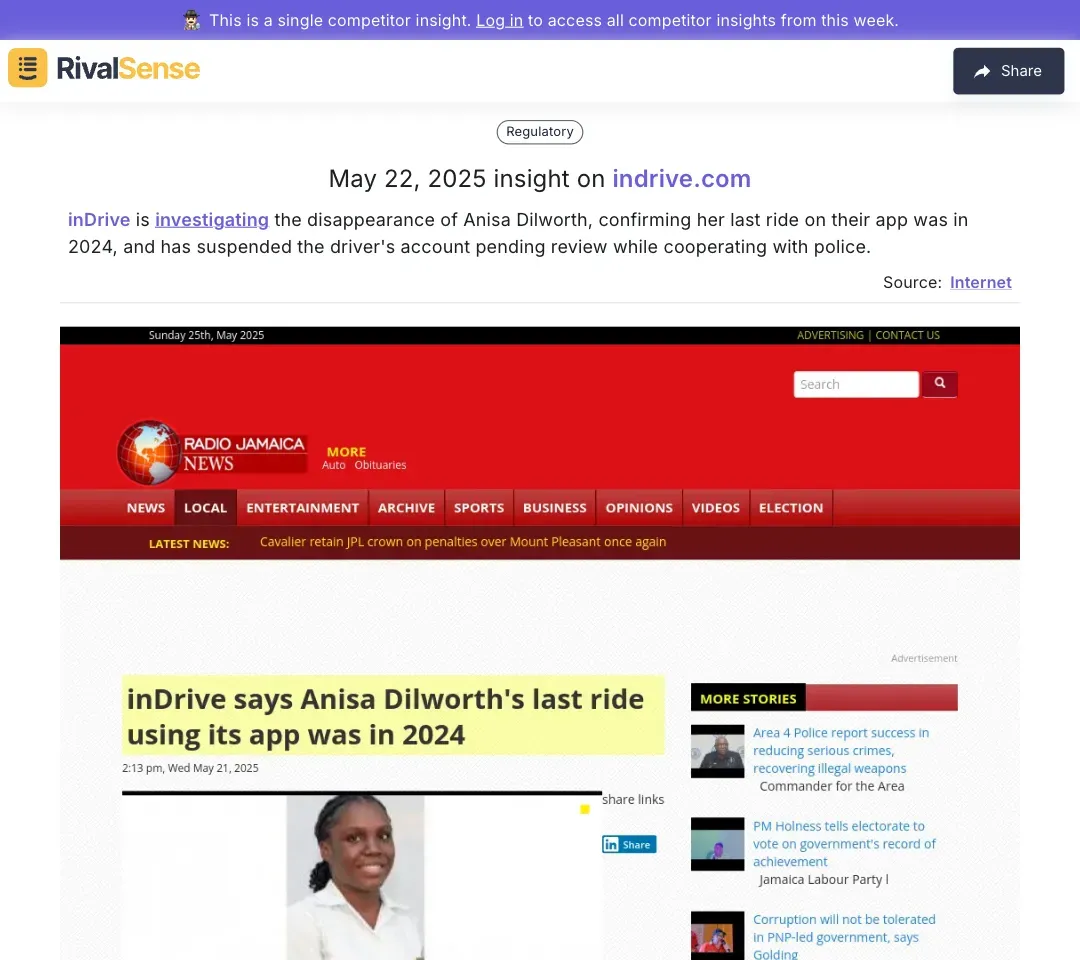Data-Driven Competitive Intelligence: A Transportation Leader's Strategic Playbook
In today's dynamic transportation landscape, competitive intelligence has evolved from a passive activity to a strategic necessity. Understanding competitors' maneuvers through data-driven insights allows leaders to anticipate market shifts and seize opportunities proactively. By transforming raw data into actionable intelligence, companies gain the foresight needed to optimize pricing, enhance service routes, and elevate customer experiences.
Here’s how to leverage competitive intelligence effectively:
- 🎯 Monitor Competitor Pricing: Track real-time fare adjustments and promotional campaigns
- 🗺️ Analyze Service Routes: Identify underserved markets from competitors' network patterns
- 💬 Customer Feedback Mining: Benchmark satisfaction metrics against industry players
- 🤖 Technology Adoption Tracking: Spot emerging trends like AI fleet management systems
Practical Tip: Conduct quarterly competitor audits focusing on 3 KPIs: on-time performance, customer churn rates, and service expansion velocity. Update your competitive dashboard biweekly for maximum agility.
Leveraging Partnerships for Brand Visibility and Social Impact
Strategic partnerships serve as powerful accelerators for brand positioning in the transportation sector. Collaborations with public institutions and community organizations demonstrate corporate responsibility while expanding market reach. These alliances create win-win scenarios where brands gain visibility through purpose-driven initiatives.
Consider these actionable strategies:
- Mission Alignment: Partner with entities sharing your core values (e.g., sustainability organizations)
- Impact-First Campaigns: Design initiatives with measurable community benefits
- Public Incentives: Offer discounts tied to social participation (e.g., safe driving rewards)
- Impact Analytics: Track engagement metrics and social sentiment shifts

Example: Tracking partnerships like inDrive's collaboration with Brazil's National Road Safety Observatory reveals how competitors build brand equity through social initiatives. Monitoring such moves helps identify partnership opportunities and assess their market impact.
Navigating Regulatory Challenges and Compliance
Regulatory landscapes in transportation shift constantly, making proactive compliance a strategic differentiator. Companies that anticipate regulatory changes avoid costly disruptions while building trust with authorities. Establishing open communication channels with agencies creates early-warning systems for policy shifts.
Build a robust compliance framework:
- Regulatory Radar: Monitor agency announcements and policy drafts
- Cross-Functional Training: Conduct quarterly compliance workshops
- Automated Auditing: Implement AI tools for real-time violation detection
- Crisis Protocols: Develop response playbooks for regulatory challenges

Example: Insights like the East Java Transportation Agency's warning to inDrive demonstrate how regulatory tracking helps anticipate operational risks. Analyzing such developments informs contingency planning and stakeholder communication strategies.
Ensuring Safety and Trust in Customer Interactions
Safety incidents represent critical trust inflection points in transportation. How companies respond directly impacts customer retention and brand perception. Proactive safety measures combined with transparent crisis management turn potential reputation disasters into trust-building opportunities.
Implement this safety framework:
| Prevention | Response | Rebuilding |
|---|---|---|
| ▶️ AI-driven risk prediction algorithms | ▶️ 24/7 incident response teams | ▶️ Public corrective action reports |
| ▶️ Mandatory safety certifications | ▶️ Multilingual communication protocols | ▶️ Customer advisory boards |
| ▶️ Real-time vehicle monitoring | ▶️ Third-party investigation partnerships | ▶️ Enhanced safety feature rollouts |

Example: Monitoring how competitors handle incidents like inDrive's response to Anisa Dilworth's disappearance provides crisis management benchmarks. Analyzing these responses helps refine your own safety protocols and communication strategies.
Actionable Insights from Competitor Moves
Competitor activities form a live blueprint of market evolution. Systematic tracking of product launches, pricing experiments, and expansion patterns reveals strategic intentions. The most successful transportation leaders treat competitor intelligence as a daily operational habit rather than periodic analysis.
Build your action plan:
- Detection: Identify strategic moves through:
- Social media monitoring
- Patent filings
- Job postings for new competencies
- Analysis: Assess impact using:
[Competitor Initiative] + [Market Gap] = Strategic Opportunity - Execution: Develop response playbooks for:
- ⚡ Immediate countermeasures (72-hour response window)
- 🧩 Differentiation strategies
- 📈 Opportunity capitalization
Practical Tip: Create a competitive war room with real-time alert dashboards. Assign team members specific competitor tracking responsibilities with monthly insight synthesis sessions.
Conclusion: Building a Robust Competitive Intelligence Framework
Sustainable competitive advantage in transportation requires an intelligence ecosystem that converts data into decisive action. The most effective frameworks combine automated monitoring with human strategic analysis, creating a continuous feedback loop between market movements and business decisions.
Implement your intelligence engine:
- Automate Tracking: Use specialized tools for 24/7 competitor surveillance
- Establish Metrics: Define 5 core competitive KPIs aligned with business objectives
- Integrate Insights: Embed intelligence in weekly leadership briefings
- Future-Proof: Allocate 15% of intelligence resources to emerging trend analysis
Emerging Frontiers:
- Predictive AI for competitor strategy modeling
- Sustainability metric benchmarking
- Real-time regulatory change impact simulations
🚀 Accelerate Your Intelligence: See how automated competitor tracking transforms decision velocity. Try RivalSense free to receive your first competitor intelligence report today, featuring real-time insights on product launches, pricing shifts, and regulatory developments.
📚 Read more
👉 5 Quick Hacks for Strategic Competitor Event Insights
👉 How AI Agents Are Revolutionizing Competitor Research
👉 Key Account Tracking vs Competitor Tracking: What's the Difference and Why You Need Both
👉 Unlock Hidden Opportunities: Mastering Competitor White Space Analysis
👉 How to Analyze Competitor Feature Updates: IPRoyal's Proxy Checker Case Study
